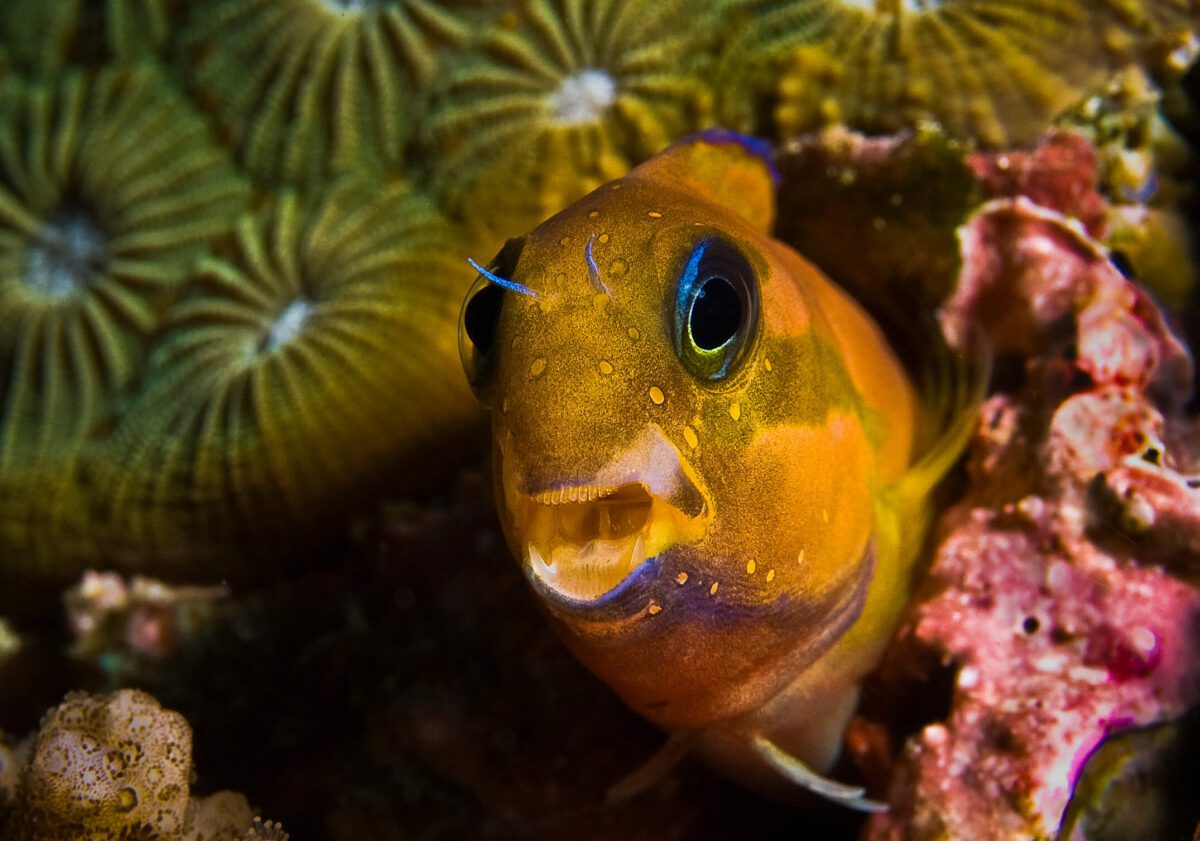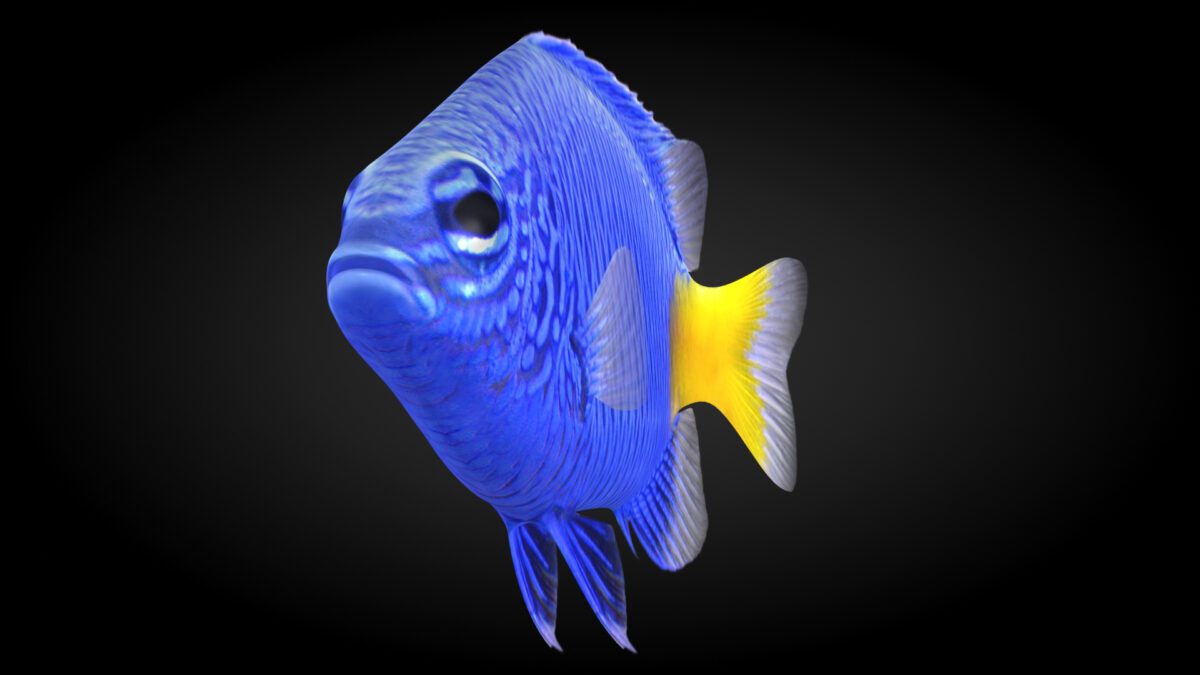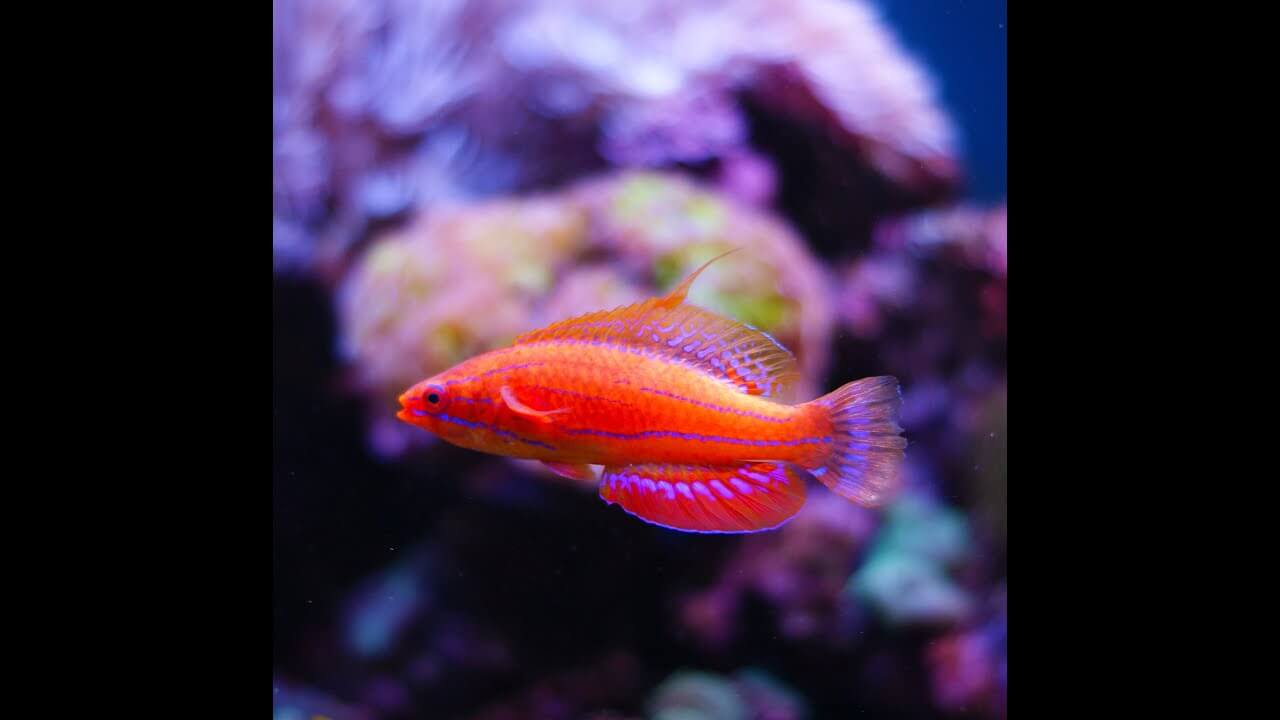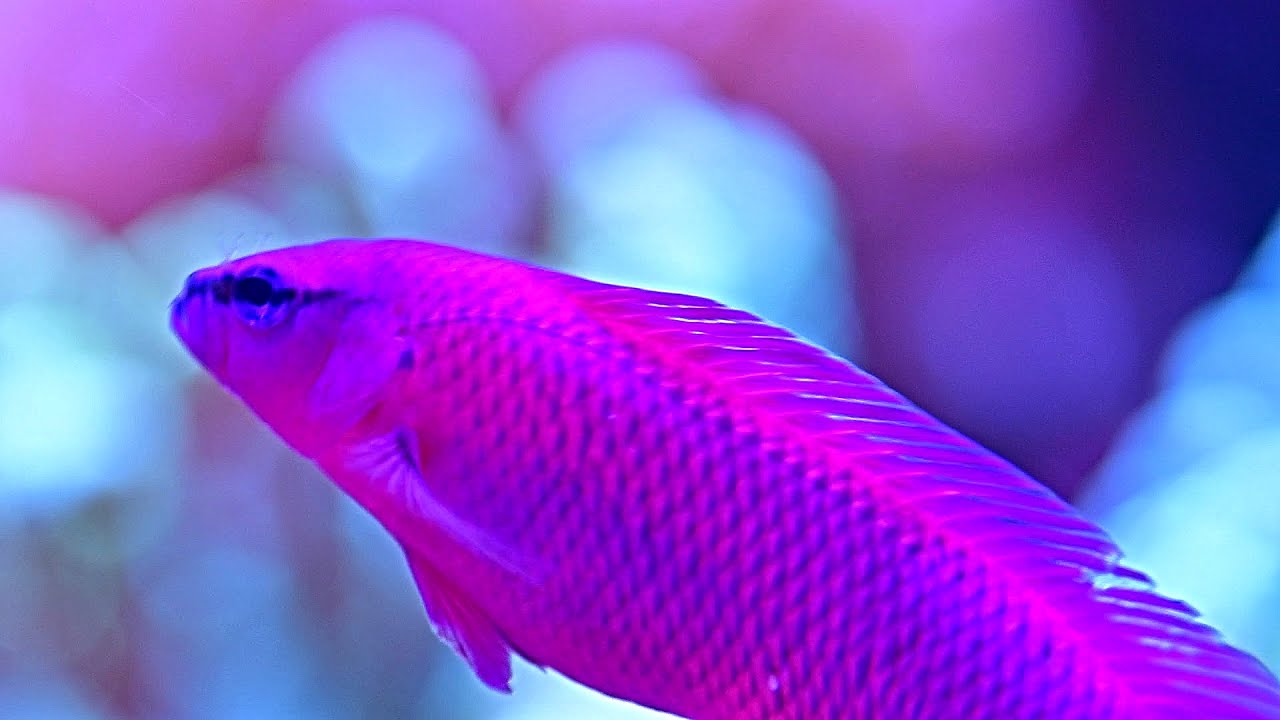Greetings, fellow aquarium enthusiasts! Today, we are diving into the captivating world of the Midas Blenny (Ecsenius midas), a stunning saltwater fish that will add a touch of brilliance to your marine aquarium. This comprehensive guide will explore everything you need to know about caring for this vibrant species. We’ve got you covered, from its unique physical characteristics to its ideal habitat requirements. Let’s embark on this underwater journey together!
Key Takeaways:
- The Midas Blenny (Ecsenius midas) is a captivating, colourful saltwater aquarium fish.
- Proper care and attention are essential for the well-being of the Midas Blenny.
- The Midas Blenny is known for its unique physical characteristics and peaceful temperament.
- Creating an ideal tank setup and providing a balanced diet are crucial for the Midas Blenny’s health.
- By following sustainable fishkeeping practices, we can enjoy the beauty and allure of the Midas Blenny while preserving marine ecosystems.
Introduction – Midas Blenny
Welcome to our species guide on the Midas Blenny, a captivating saltwater aquarium fish. This section will explore the taxonomy and classification of this fascinating species, as well as its natural habitat and geographical range.
Taxonomy and Classification
The Midas Blenny belongs to the family Blenniidae and is classified under the genus Ecsenius. Its scientific name is Ecsenius midas. This species falls into the broader category of marine fish taxonomy, where organisms are classified and categorized based on their evolutionary relationships and characteristics.
| Attributes | Descriptions |
|---|---|
| Scientific name | Ecsenius midas |
| Common Names | Midas Blenny |
| Origin | Indo-Pacific |
| Family | Blenniidae |
| Social | Generally peaceful, can be territorial |
| Domain in tank | Bottom dweller, likes to perch on live rock |
| Minimum tank size | 30 gallons (114 liters) |
| Diet | Omnivore |
| Breeding | Egg layer, difficult to breed in captivity |
| Care level | Moderate |
| pH Range | 8.1 – 8.4 |
| Water Hardness | 8 – 12 dKH |
| Temperature in F/C | 75-82°F (24-28°C) |
| Common Diseases | Marine Ich, Marine Velvet |
| Life Span | Up to 5 years |
| Size | Up to 4 inches (10 cm) |
| Best Tank Mates | Peaceful fish, avoid large predators or aggressive species |
Natural Habitat and Distribution
The Midas Blenny is native to the Indo-Pacific region, including the Red Sea and the western Pacific Ocean. It thrives in rocky or coral-rich areas with plenty of hiding spots, offering protection and camouflage. This species has a wide geographical range, stretching from the eastern coast of Africa to the Marquesan Islands, showcasing its adaptability to diverse marine environments.
By understanding the species classification, marine fish taxonomy, native habitat, and geographical range, we can gain valuable insights into the natural history and distribution of the Midas Blenny. This knowledge is crucial for providing the appropriate care and creating a suitable environment for this captivating marine fish.
Physical Description and Characteristics
Colours and Markings
The Midas Blenny is known for its vibrant colours and unique physical features. It has an elongated body that starts with a lighter orange shade and fades into a golden yellow colour. This species also has sapphire blue highlights on its eyes.
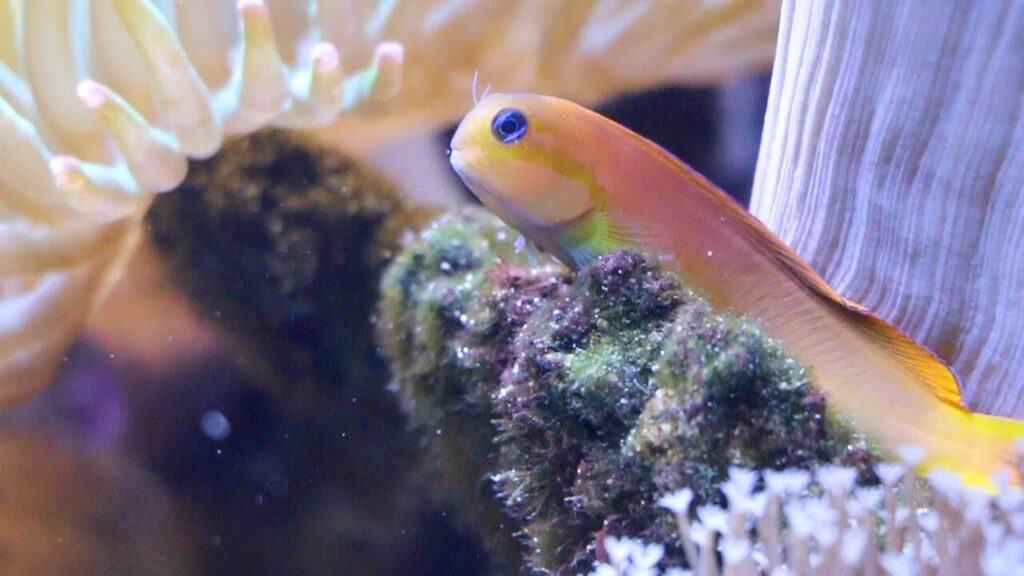
Gender Differences
There are no significant gender differences in appearance, making it difficult to determine the sex of the Midas Blenny.
Varieties
Breeders have produced different varieties of the Midas Blenny, resulting in variations in colouration and markings.
Grades
These varieties are often ranked into different grades based on their quality.
Behaviour and Temperament
The Midas Blenny showcases interesting behaviour, often swimming in an eel-like motion. It is a peaceful fish but can behave aggressively if kept in a confined tank.
Aquarium Requirements
To ensure the well-being of the Midas Blenny in captivity, it is crucial to meet specific aquarium requirements. By providing the ideal tank size and layout, maintaining appropriate water parameters, and selecting suitable tank mates, you can create a thriving environment for your Midas Blenny.
Ideal Tank Size and Layout
The Midas Blenny requires a minimum tank size of 30 gallons to accommodate its active nature. This provides ample space for the fish to swim and explore. Giving plenty of rocks and caves for the blenny to perch and hide is also essential. These structures mimic their natural habitat and allow them to showcase their unique behaviour.
Water Parameters
Monitoring and maintaining proper water conditions is vital for the health of the Midas Blenny. The recommended temperature range is between 75°F and 80°F (24°C to 27°C), with a pH level between 8.1 and 8.4. Salinity levels should be maintained at a specific gravity of 1.020 to 1.025. Regular water testing and adjustments are necessary to ensure the optimal conditions for the blenny’s well-being.
Suitable Tank Mates and Potential Conflicts
The Midas Blenny is generally peaceful and can coexist with other peaceful fish species in the aquarium. However, it is essential to exercise caution when selecting tank mates. Small planktivores, firefish, and gobies may be nipped by the blenny, leading to potential conflicts. Researching and choosing compatible tank mates is crucial to avoid aggression and territorial disputes.
Compatibility with Live Plants and Invertebrates
The Midas Blenny is compatible with live plants, making them a delightful addition to a reef aquarium setup. Planting suitable live plants provides natural hiding spots and adds visual appeal to the tank. Additionally, the blenny exhibits no particular aggression toward invertebrates, making it a safe companion for various species of marine invertebrates.
Midas Blenny – Care
Proper care is essential for the health and well-being of the Midas Blenny. Regular aquarium maintenance, such as water changes, filter cleaning, and monitoring water parameters, is necessary to ensure optimal conditions for the fish. Maintaining a clean and balanced environment can promote Midas Blenny’s health and longevity.
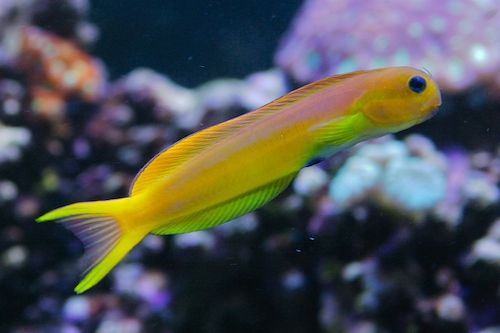
Diseases
Although the Midas Blenny is generally a hardy species, it can be susceptible to common fish diseases. Being proactive in disease prevention is key to keeping our fish healthy. Some common fish diseases to watch out for include:
- Ich (Ichthyophthirius multifiliis): This parasitic disease causes white spots on the fish’s body and fins. Quarantining new fish and maintaining good water quality can help prevent its occurrence.
- Fin Rot (Aeromonas and Pseudomonas bacteria): This infection leads to the fish’s fins and tail deterioration. Maintaining a clean and stress-free environment can help prevent fin rot.
- Marine Velvet (Amyloodinium): This parasitic disease causes a yellowish dusting or velvet-like film on the fish’s body. Quarantining new fish and maintaining proper water quality can limit its spread.
To keep our Midas Blenny healthy, it’s essential to closely monitor their behaviour and appearance, promptly addressing any signs of illness or distress. In a disease outbreak, appropriate treatments and medications should be administered as advised by a qualified aquatic veterinarian.
Diet and Feeding
The Midas Blenny is primarily an herbivore, feeding on algae and marine vegetation in its natural habitat. To ensure the well-being of the fish in captivity, it is crucial to provide a balanced and nutritious diet that meets its nutritional needs.
Dietary Preferences
The Midas Blenny prefers a diet that includes finely chopped crustacean flesh, mysis shrimp, and vitamin-enriched brine shrimp. These food sources provide essential nutrients and help maintain the blenny’s health and vitality.
Recommended Foods and Feeding Schedule
In addition to crustacean flesh, mysis shrimp, and vitamin-enriched brine shrimp, the Midas Blenny can benefit from frozen herbivorous preparations, micro, and blue-green algae. These foods help diversify the diet and provide a well-rounded nutritional intake.
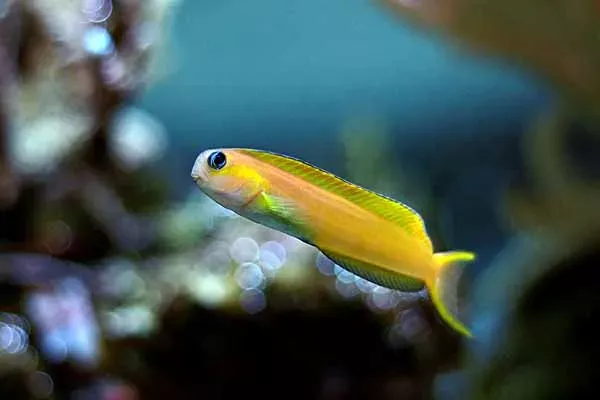
Feeding should be done multiple times daily to ensure the fish receives adequate nutrition. Regular and consistent feeding with a varied diet contributes to the overall health and well-being of the Midas Blenny.
Tips on Ensuring a Balanced and Nutritious Diet
To ensure a balanced and nutritious diet for the Midas Blenny, it is essential to consider the following tips:
- Vary the diet by offering a mix of different foods to provide a wide range of nutrients.
- Monitor the fish’s feeding habits and adjust the quantity accordingly. Avoid overfeeding, as it can lead to health issues.
- Consider incorporating supplementary foods such as algae-based flakes or pellets to enhance the blenny’s herbivorous diet.
- Ensure the food is high quality and suitable for the fish’s nutritional needs.
By following these tips and providing a diverse and nutritious diet, you can help maintain the health and vitality of your Midas Blenny.
Breeding and Reproduction
Breeding the Midas Blenny in captivity can be a challenging but rewarding experience. Determining the sex of the fish is difficult due to the lack of significant gender differences in appearance. Successful breeding requires the provision of suitable conditions, including proper tank setup, water parameters, and the presence of potential breeding partners.
Sexing
Determining the sex of the Midas Blenny can be challenging as no distinctive physical characteristics differentiate between males and females. Unlike other fish species, the Midas Blenny does not display visible differences in colouration, fin size, or body shape between the sexes. Therefore, alternative methods, such as observing breeding behaviour, may be necessary to identify the sex of the fish.
Breeding Behavior and Conditions
The Midas Blenny engages in unique breeding behaviour that involves courtship displays and egg laying. During the breeding period, males typically initiate courtship displays to attract females. These displays often involve acrobatic movements, flaring of fins, and vibrant colouration.
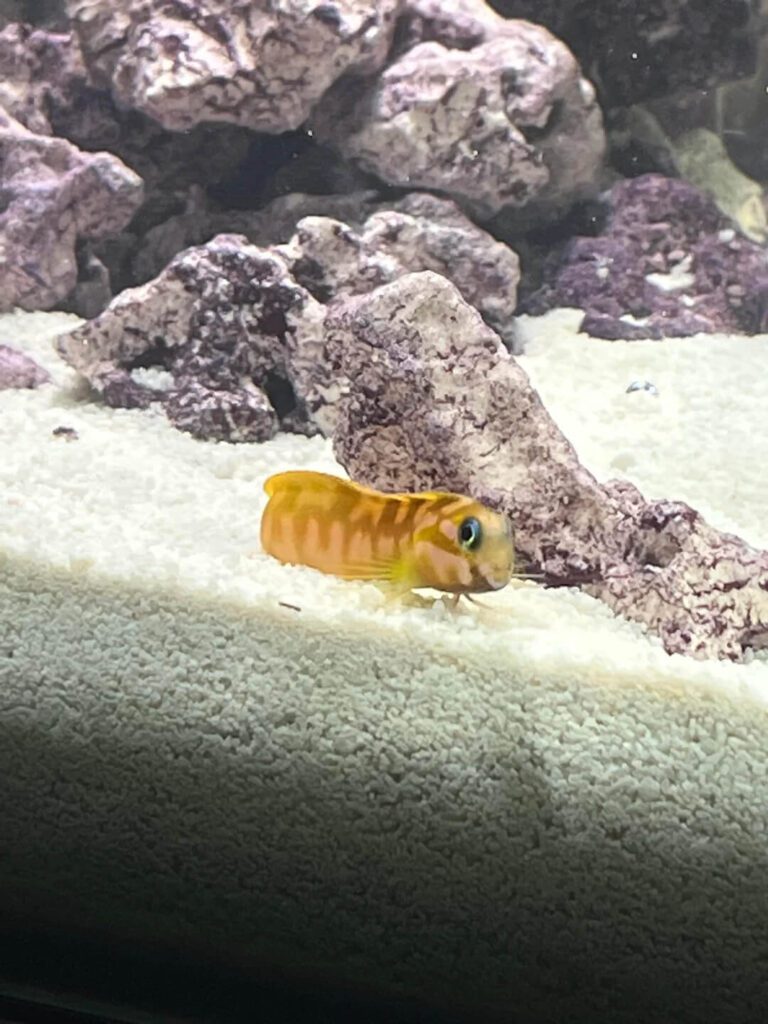
Once a pair has formed, they will search for a suitable nesting site, typically a cave or crevice in the aquarium. Adequate hiding spots and a well-established hierarchy between potential breeding partners can promote successful breeding.
Care of Eggs and Fry
After the female Midas Blenny lays her eggs, the male and female take responsibility for their care. The eggs are carefully guarded and fanned by the parents to ensure optimal oxygenation. Providing a secure environment and guaranteeing the water parameters remain stable is essential. The eggs typically hatch within a few days, and the fry will initially rely on their yolk sacs for nutrition. Introducing appropriate fry food, such as small live or frozen prey, is crucial for their development as they grow.
Challenges in Breeding in Captivity
Breeding the Midas Blenny in captivity presents several challenges. The difficulty in determining the sex of the fish can make it challenging to pair compatible breeding partners. Creating the ideal breeding conditions, including appropriate tank setup, water parameters, and suitable hiding spots, can be demanding. Lastly, successfully raising the fry requires meticulous attention to water quality and providing proper nutrition. Overcoming these challenges often requires experience, patience, and a comprehensive understanding of the Midas Blenny’s breeding behaviour.
Summary
The Midas Blenny (Ecsenius midas) is an exquisite species of saltwater aquarium fish that captivates marine enthusiasts with its stunning colours, unique physical characteristics, and peaceful temperament. This fish can thrive and become a vibrant addition to any well-maintained aquarium with proper care and attention.
To provide the Midas Blenny with an ideal living environment, setting up a suitable tank layout is essential. A minimum tank size of 30 gallons is recommended to give the fish enough space to swim and plenty of rocks for perching. Maintaining optimal water parameters, including temperature, pH, and salinity levels, is crucial for the fish’s well-being.
When selecting tank mates, choosing peaceful species that coexist harmoniously with the Midas Blenny is advisable. However, small planktivores, firefish, and gobies should be cared for, as the blenny may nip them. The Midas Blenny can also happily coexist with live plants and invertebrates in a reef aquarium.
Feeding the Midas Blenny a balanced and nutritious diet is essential for its health. It is primarily a herbivore, preferring finely chopped crustacean flesh, mysis shrimp, and vitamin-enriched brine shrimp. Including frozen herbivorous preparations and algae in its diet is also beneficial. Feeding should be done multiple times daily to ensure the fish receives adequate nutrition.
In conclusion, the Midas Blenny is a delightful species that brings brilliance and charm to the underwater world. By providing the appropriate tank setup, proper diet, and suitable tank mates, aquarists can create a thriving environment for this captivating fish. With its striking colors and peaceful demeanor, the Midas Blenny is a beautiful addition to any saltwater aquarium.

